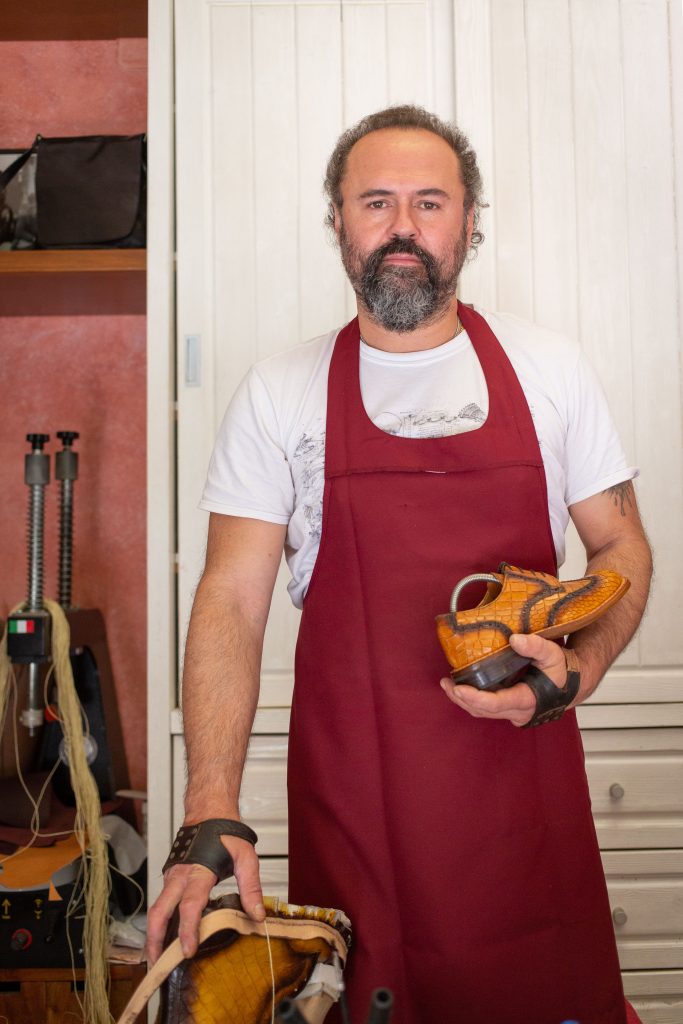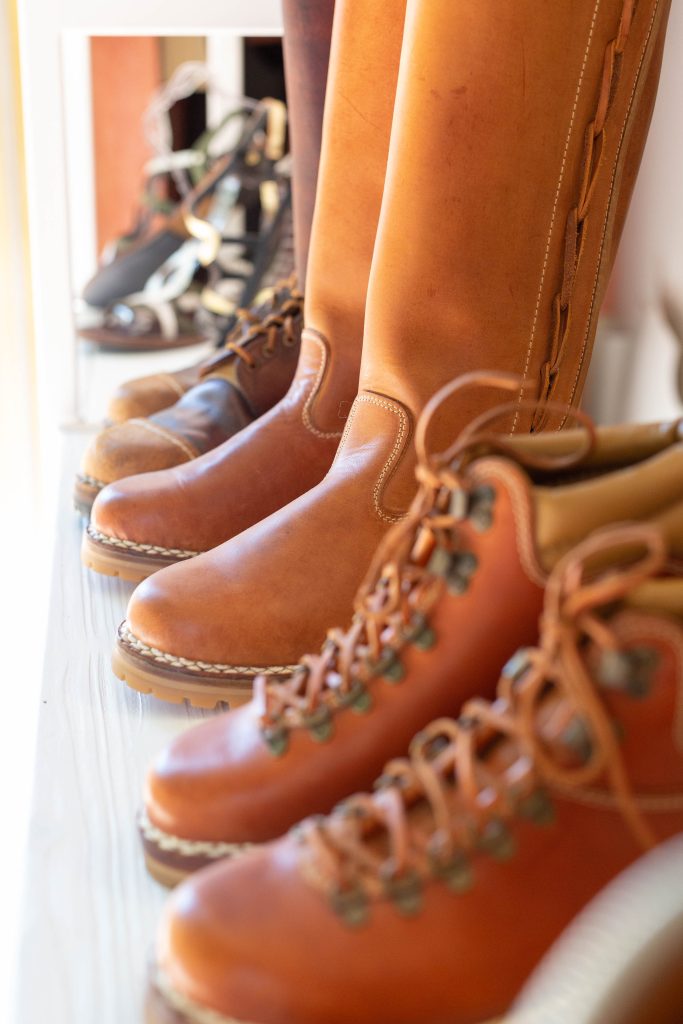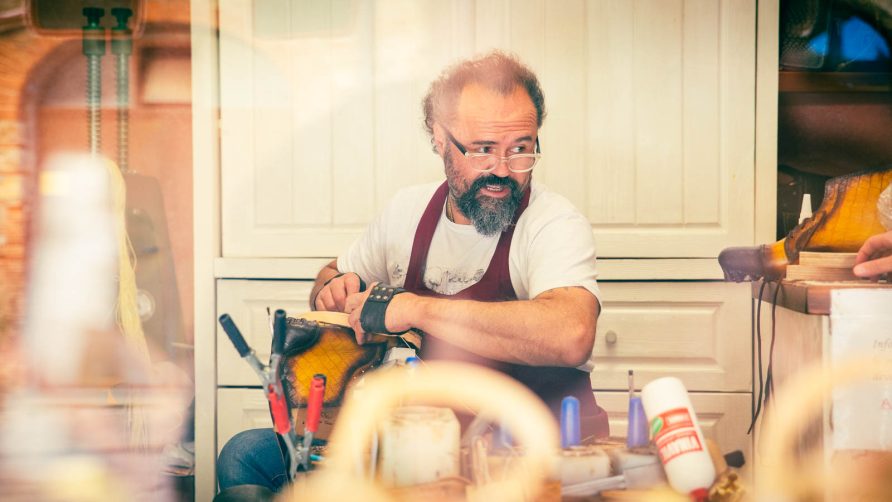The label “Made in Italy” evokes thoughts of style, quality and craftsmanship.
Recent visits to Italy had left me skeptical of the phrase as a marketing ploy used to target unsuspecting foreigners. In an age of Globalization, marketers allude to Italian Design, Italian flavour & Italian ‘Inspired’ as a short-hand for Italy’s real secret sauce: Passion.
Even genuine Italian products are likely mass-produced. Far-removed from the idyllic notion of an artisan skillfully crafting something by hand.
Then, like fog dissipating under the Tuscan sun, my cynicism evaporated as I entered an authentic shoe makers’ workshop. Discovering Diego Daddi’s leather shop, “Quel Pellaio di Diego” in Suvereto is a revelation.
I met up with Diego as he made a pair of bespoke men’s shoes.
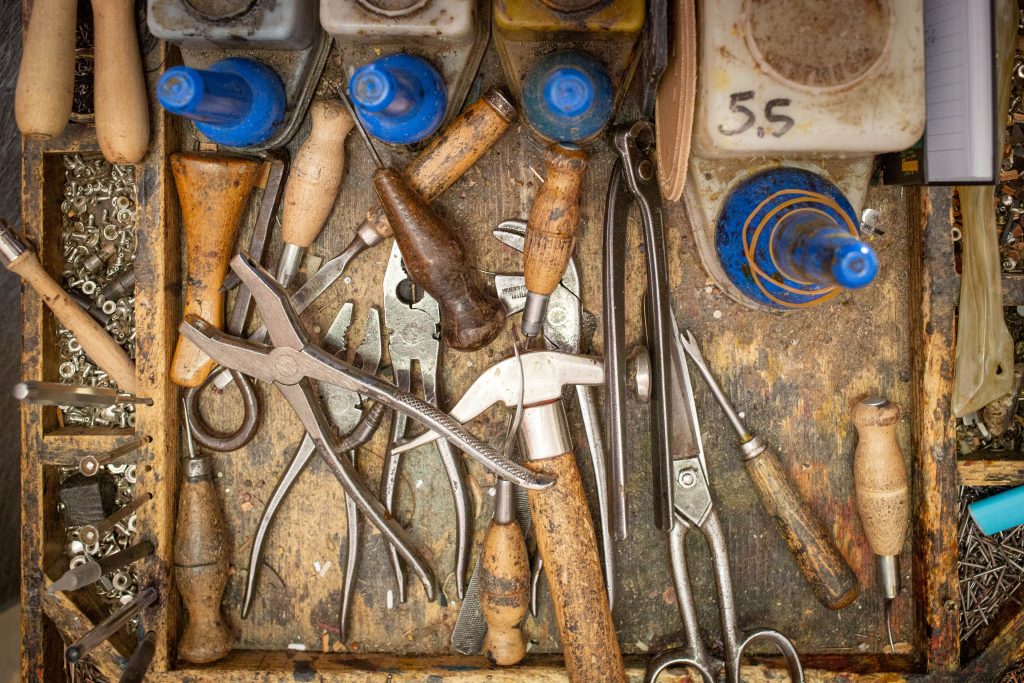
First thing’s first: Diego looks wild. He is a combination of rock star and mad-scientist with hair that appears to be (in-part) styled by electric shock.
I would be a lying if I were to say I wasn’t a little intimidated by the man. The locals warned me Diego could be a bit prickly. Instead, as someone who designs and makes things myself, I discover someone I instantly connect with:
A Creator.
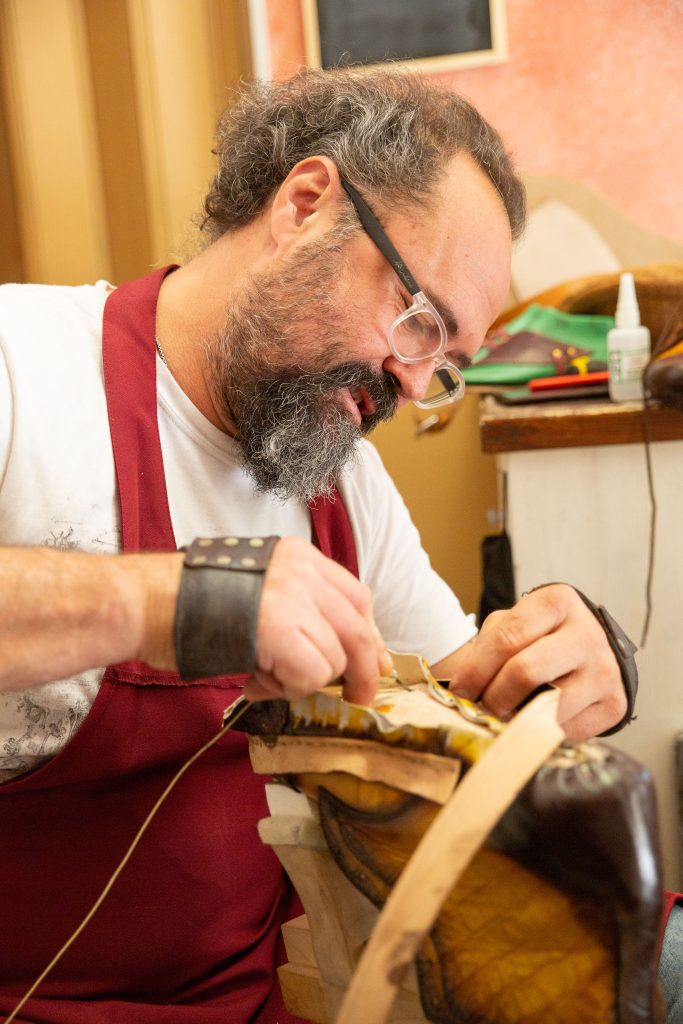
Born from the Land
For the first few minutes I watch as Diego positions various pieces of leather over a dummy foot.
Like a tailored suit, each leather panel is cut to simultaneously follow form and to create style and structure.
After each adjustment Diego pauses to inspect the work-in-progress with his critical eye.
Hand-crafting a shoe is both a manufacturing process and an art. In fact, the process itself is contradictory: It is both introspective yet intensely physical.
Pushing a large needle and thread through leather and sole requires strength.
Diegos’ forearms strain as he pushes a needle through layers of leather, then pulls the thread tightly to fasten the pieces together. I interrupt his concentration with a question:
“Tell me about the leather. Where do you get it from?”
Diego replies, “It is sourced locally of course, right here in the Maremma.”
Tuscany is renown for its bovine products; from its famous Florentine steak to designer leather goods.
The Maremma region in southern Tuscany, is often called Italy’s last wild frontier.
To this day, real Cowboys (Butteri) still exist in the Maremma, roaming the region’s wild landscapes and herding their cattle according to centuries-old customs and tradition.
It’s only natural that traditional crafts such shoe making still exist in places where people are still intimately connected to the land.
Diego Daddi was born and lives in the small mediaeval village of Suvereto where he runs his small artisan workshop.
Tradition versus the Modern World
Wandering through the workshop with my camera, I notice a customer enter the shop. The customer, a local elderly gentleman, greets Diego before gesturing to the contents of his plastic bag.
“Can you help me? My shoe needs repair.“
Cordially, Diego replies, “Sure, let’s have a look.”
Reaching into his bag, the old man takes out an inexpensive, “discount store” running shoe. He points to the nylon-mesh upper which has torn above the injection-moulded plastic sole.
Looking up from the low-hanging glasses perched on the tip of his nose, Diego looks over at me with a defeated expression.
Focusing his attention back to the customer, Diego politely answers, “I’m sorry sir, unfortunately these are not repairable.”
The meaning of the moment is not lost on me. It embodies the experience of being an artisan in the modern world.
As industrialization chokes our environment and inundates the world with disposable “stuff”, independent creators like Diego become increasingly rare. They are simultaneously less important to the masses (motivated by low cost) and yet increasingly important to those who value the craftsmanship and individuality of the human hand.
Traditional “Made in Italy” still exists but is becoming less common.
Perhaps this particular style of “Made in Italy” requires a way of describing it as something more magical.
Maybe something like…
“Made well, with passion and tradition by really special people who also happen to be Italian”.
Isn’t that what we all really want to hear?
Unfortunately that maybe too long to fit on a label.
You can visit Diego’s shop at www.quelpellaiodidiego.it
He is taking orders and shipping internationally.
